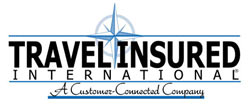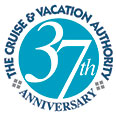Scam or Deal: Will That Cruise Sale Really Save You Money?
If you're like us, your inbox is flooded daily with cruise line emails advertising amazing sales that will save you money. Free this, free that, BOGO (Buy One Get One) half off, discounts of 50, no 60, no 75 percent off prevailing rates. Your inner bargain hunter starts itching to snag that deal, while the killjoy skeptic on your other shoulder is whispering, "This sale is too good to be true."
Which is it? If the offer is coming from the cruise line or a travel agent, it's not a scam -- you will be able to book a cruise. But the deal, as advertised, might be misleading. Promises of huge discounts might not actually result in the cheapest cruise fare you've ever seen, and fees hidden in the fine print can bump up the price you pay.
To cut through the confusion, we take a look at some of the most common cruise line offers to uncover what's really on offer. Scam or deal -- the only thing that matters is what price the cruise line or travel agency is asking, and whether you're willing to pay it.
As always, your best bet is to work with a reputable travel agency who can help you decipher the offers and let you know all of the relevant information so that you can make an informed and intelligent decision.
DISCOUNT OFF OF BROCHURE FARE
Fine Print ------
Would you like your cruise half off? How about 75 percent off? Yes, please!
But wait a minute -- that's 75 percent off of what? The answer to that is "full fare," but cruise lines are vague about what counts as full fare. Some lines use the brochure rate -- a somewhat mythical price that exists only in cruise line advertising, usually with a slash through it. Pretty much no one pays these inflated prices.
Also, it has been reported that cruise lines sometimes raise rates just prior to a sale, so they can claim to slash fares -- even if the supposed lower fare is the same, or more expensive, than previous rates. The take-home is that "full fare" can mean anything, including price points no customer has actually paid for the cruise in question.
The best advice is to forget about the actual percentage off, and just assess whether the list price for your cruise is what you're willing to pay. If you monitor fares for a few weeks prior to booking, you'll have a better sense of what's a deal and what's not.
++++ Scam or Deal?
Percentage-off deals don't always lead to the dirt-cheap prices you're expecting, but they can indicate a true sale with reasonable prices.
BOGO (BUY ONE GET ONE)
Fine Print ------
BOGO deals -- typically buy one get one free or half price -- are a particular favorite of Royal Caribbean, though other lines might use this lure as well. The hook is that if you buy one cruise fare at full fare, you get the second one discounted.
BOGO deals are just more complicated percentage-off deals. The same caveats apply regarding what is a full fare.
The other tricky thing about BOGO deals is that the cruise lines list the prices with the discount factored in. We checked fares for a three-night Bahamas cruise during a Royal Caribbean promotion for BOGO 60 percent off (as of press time), and found starting rates listed as $198 per person and in tiny print, a notice that the fare had been $284. If you weren't paying careful attention, you'd think the sale fare was $198 for the first person and $79 for the second. But Royal Caribbean has already done the math; the first person is actually paying $284 and the second $114. Add that together and divide by two and you get the list price of $198.
++++ Scam or Deal?
BOGOs can be misleading. Once you know that the discount is already factored into the listed prices, you can decide whether that fare is acceptable to you or not.
FREE AIRFARE OR HOTEL
Fine Print ------
Free airfare and hotel deals are most common among luxury and ultra-premium lines, though they can show up industry-wide. And with airfare and pre- or post-cruise hotel fees a significant part of any cruise vacation budget, the idea of getting such add-ons for free is quite an attractive offer.
The first thing to know about free airfare deals is that they're typically limited to select major airports. The fine print for one Oceania
If it's even "free" to begin with. Regent Seven Seas has a standing free airfare offer, and Cruise Critic members routinely opt out of Regent's air and get hundreds of dollars back as an air credit. (They've received reimbursement for opting out of free hotel deals, as well.) Which means that the free airfare is not really free, but bundled into the fare -- and if you're a savvy shopper, or have frequent flyer miles, you can likely get a better deal on your own.
Finally, watch out for "air deviation fees," should you wish to influence air routings or fly in a few days pre-cruise with your free air offer. If you don't want to pay extra, you have to settle for whatever routing (including layovers), the cruise line chooses.
++++ Scam or Deal?
If you think you're getting something for nothing, then you've been scammed -- or perhaps you're just incredibly naive. Free air and hotel deals can take some stress out of planning if you're not picky, but in many circumstances you will get a better deal or more satisfactory flight options if you book your own.
KIDS SAIL FREE
Fine Print ------
We're used to kids' fares on everything from restaurant meals to museum admission, so many first-time cruisers are shocked to find the littlest kids have to pay the same cruise fare as adults. Kids Sail Free promotions are alluring because they promise a significant discount to expensive family vacations.
There are a few things to know about such offers. The first is that they always apply to children sailing as the third or fourth passenger in a cabin. That means if you want two connecting cabins, one for mom and dad, and one for the kids, you will still have to pay full price. Also, depending on the ship, the cheapest cabins don't always have extra berths for third or fourth passengers. In order to get free fares, you might need to upgrade your cabin and pay two expensive adult fares, which could end up costing more than two lower-cost cabins. Even if your ship does offer extra bunks in inside or outside cabins, do you really want to cram four people in a tiny room with no access to fresh air? Remember, you are supposed to be on vacation.
Also, if it's a true kids deal (versus a general third-passenger deal), some lines impose age limits. For example, MSC's ongoing "kids sail free" offer applies to kids either 11 or 12 and under (age limit varies based on sail date). Your 13-year-old may act immature, but he's going to have to pay full fare.
Finally, note that while kids will get free cruise fares, you will still have to pay taxes and fees and gratuities for them. We checked prices on a current Norwegian cruise deal where one of the perks you can pick is a free extra guest or two. For a seven-night cruise, each passenger in the cabin (we checked for four passengers) was charged $130 in taxes, even when the "extra guest" offer was selected and the third and fourth cruise fares were waived. (Incidentally, third and fourth passenger fares when we checked were only $229 per person-- compared to $1,099 for the first two passengers -- so were already significantly reduced even before choosing the "extra guest" offer.)
++++ Scam or Deal?
This one's a deal in our books. Yes, there's fine print that can be misleading at first, but at the end of the day, the cruise line does not charge your kids a cruise fare. However, if you have to upgrade your cabin to access the promotion -- thereby increasing the costs for the adults on the booking -- you might not realize any savings from the offer.
Onboard Credit (OBC)
Fine Print ------
Free money! It's true -- onboard credit is essentially the cruise line handing you free money to use onboard.
There are catches, for sure. If you don't spend all your onboard credit, you typically lose it when your cruise ends. You can't get paid out for unused amounts in cash. But, hey, it's called "onboard credit," so that seems clear enough.
Marketing emails will often say things like "up to $250 in onboard credit," with the fine print indicating that the full amount is per cabin, not per person, and you only get the full amount by booking a suite. The $20 you might get for your inside cabin could be more trouble than it's worth if it causes you to go shopping onboard and come out with $50 in T-shirts, costume jewelry and souvenirs -- spending more than you got for free.
++++ Scam or Deal?
Deal! You really are getting something for nothing here. There's no way to prove that cruise lines raise all rates 50 bucks when they offer $50 OBC because cruise fares rise and fall all the time. And it's not the line's fault if you spend more than your credit when you go shopping. So go ahead -- feel happy that you got a deal, and tell your inner skeptic to take a holiday.

With each issue of Ultimate Experiences Online, you’ll enjoy a collection of articles, slideshows and videos that we will inspire you to make your travel dreams a reality.

To help you discover ways to explore the world, we're pleased to share our The Travel Magazine Online.
 Save money and escape the crowds. Hot Deals and multi-port packages. Savings of up to 50%!
Save money and escape the crowds. Hot Deals and multi-port packages. Savings of up to 50%!

Our free app that allows you to carry all of the destination information you need while traveling, right in your pocket!

We recommend optional travel insurance that protects you in the event of having to cancel your trip avoiding travel vendor cancellation policies and more!





